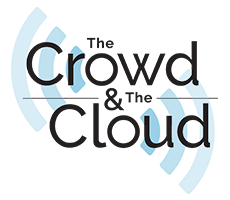
Newsletter
Sign up and stay in-the-know about The Crowd & The Cloud and the world of citizen science.


Angel and Mariel Abreu are naturalists, professional birding guides and mentors to young birders.
What is happening to bird habitat in South Florida?
Angel:
We’re basically at the southern end of Florida. The birds are coming north from Cuba, Jamaica, the Caribbean side, or even Mexico, depending on the weather. Birds that usually would be crossing the Gulf of Mexico may come this way to save time. What happens is they're flying so long that they depend on these spots to be there. It's kind of like you're “running on empty,” you know there's a gas station 50 miles away, and you're depending on it. When you get there, it's closed.
Everywhere you go they are knocking down hummocks to be able to build condos and homes. (Hummock = an elevated tract of land rising above the general level of a marshy region.) Places like El Lago and the Upper Keys have preserved a lot of the hummocks, but little by little we’re losing all these spaces. We used to have large tracts, but they’re fragmented now and they support fewer birds. At some point I'm sure they’ll get too crowded, and then the habitat breaks down pretty quickly.
Tell us a little about your involvement in the Christmas Bird Count?
Angel:
We have been participating in bird counts maybe five, six years now. Basically, we have been given this one area to count in. Mostly, it's a specialized area for birds that are migrating. You might not find as many species as other areas that get covered, but some are either endangered or focus species. So, we want to make sure we count these areas where they are, where we are finding them, and in most of the cases we don't have a whole lot of this habitat. We have to find these species in the one specialized habitat they are using.
Mariel:
The good thing is they will use this data to determine that this is a bird habitat stopover. By people’s sightings, they will know what they need to protect.
Angel:
This is the 65th year of this specific count we're doing here in South Florida. This one started in 1949. All these years, it is all citizen science. Nobody is getting paid to do this. We're just coming out here and doing it. Some are professionals. Some are amateurs. The amateur birder gets together with someone with more experience, and that helps them out. The next year they have a little more experience and the next thing you know you've bred a person who can do this.

Why is the count done at Christmas?
Angel:
It was once a Christmas bird hunt. Everybody would come home and they had to tally how many birds they had hunted or shot in one day. It was somewhat of a competition. It transitioned to the point where conservation was more in the limelight, and something that was being looked at a little bit more. All of a sudden, people wanted to go out and start counting these species instead of killing them. In a sense, it was a conservation push. There was a change in society, people wanted to conserve instead of take.
How did the two of you get involved in this?
Angel:
We were out doing our normal birding, exploring and looking at wildlife - already outside looking at things. The first time we had been active in the Tropical Audubon Society, this count came around. We talked about, "Why don't we go check this out?" Once we did, it felt good to go out there and actually count these species, and come back with a better understanding of the habitat and the bird species that are living in the area. We benefit by spending more time out here and learning more about birds. Somebody else benefits from the data, and it's all of us working together.
This data gets compiled and does into a big data set. I don't think there's any other way to get this much data. It's a free thing, in a sense. It costs money to run everything. It's not like you're having to pay each person a salary to go out and count these birds. We would never be able to do this. It's a lot of manpower, but it's amazing what we could pull off just because we want to get our brains together, get our minds together, do this, and actually find out what's out there. In a way we help with conservation, we're able to count these birds every year.
Mariel:
I just love being outside. I love anything that moves from the butterflies to birds, reptiles. I'm into anything, easily distracted by any kind of nature. Just being outdoors in their habitat itself even when nothing's around is just breathtaking. There's nothing like it.

Are there any species that will do well with change?
Mariel:
There are some species in particular that actually do well in the city. They adapt, and they do well. That's where we find a lot of specific species, within Miami, not so much in wild areas like where you'd expect. In particular, there’s the Cooper's Hawk. They tend to specialize on Eurasian Collared Dove. It's everywhere, and it's not native. It's an exotic species. The Cooper’s Hawk target those in the city, which is good because they're everywhere!
Angel:
Some species are able to adapt to these city changes or just on the edge of the Everglades, where we have a lot of homes that are being built. These species have been able to adapt, but some species, like the Nelson’s Sparrow, will not. They're specialized. If we lose this, then we'll likely not have a wintering population here in South Florida.
What is “BirdLog”?
Mariel:
BirdLog is an app, and it links up to your eBird account, which is a citizen science project that Cornell has. All that you enter in here, all the species, checklists and locations, it basically gets uploaded into a server. For competitive birders, they'll know their state list, county, or what species they have seen in what years. It's really good for your own patterns. We can look back on 11 years of our own data. It gives us an idea of what species are when and where, because they vary throughout the year. Researchers look at this data to figure out which habitats the birds use, and what they need to conserve as far as land acquisitions. It's helpful for science. It's helpful for the community. It's just all around a great project.
Angel:
The nice thing about eBird is it's another thing like the Christmas Bird Count. It's a citizen science project that scientists are able to collect data off of, huge amounts of data, that otherwise wouldn't be collected. The birder on an everyday basis is going out and birding, they're adding to a database the same way as scientists or a field tech would for a project.

How do scientists and conservation managers use eBird data?
Angel:
They get all the sightings as birds move through, so they could show you the migration in real time in a video type format that you could understand. They're learning the timetables of when these species are moving. We have a lot of wind farms, for example, so they could learn things like what times these species are flying through. Are they only seen from 8:00 AM to 11:00 AM? Maybe that's the time to shut off the windmills.
Why do you think people should participate in this kind of citizen science?
Angel:
The average person nowadays is in such a hurry to get out of work, or get to work, or get to the next place, or get to pick up your kid from school or whatever it may be. But sometimes you need to slow down. People sometimes ask us, "How did you guys see X number of species in Miami, in one year?" Or in just one day. On January 1st, Mariel and I went out birding for the first day of the year and we saw 67 or 68 species of bird, just in the city alone.
Mariel:
Which is a lot.
Angel:
Somebody says, "Oh my God. How did you see so many species?" Once you slow down, you start discovering all these other things that are out there, whether it be birds or a flower or even a snail or anything else. A snake, whatever it may be.
Mariel:
People always seem to be amazed when they stop.
Angel:
When we slow down, we're discovering all these new things that are out there. If we were to rush by the trail, and just get from Point A to Point B, we'd probably miss a hundred things to look at. Part of discovering the outdoors is slowing down a bit and checking out what's right there in your backyard. As you slow down, you start to discover all these little things out there. And when you see one thing, it leads to three. So, you stop to see a butterfly and you may see a lizard, or a snail, or a bird species come in.
Mariel:
Some people are more fascinated with one thing than the other. Some people, it's birds. Other people, it's butterflies or reptiles.
Angel:
They're waiting to be discovered.
